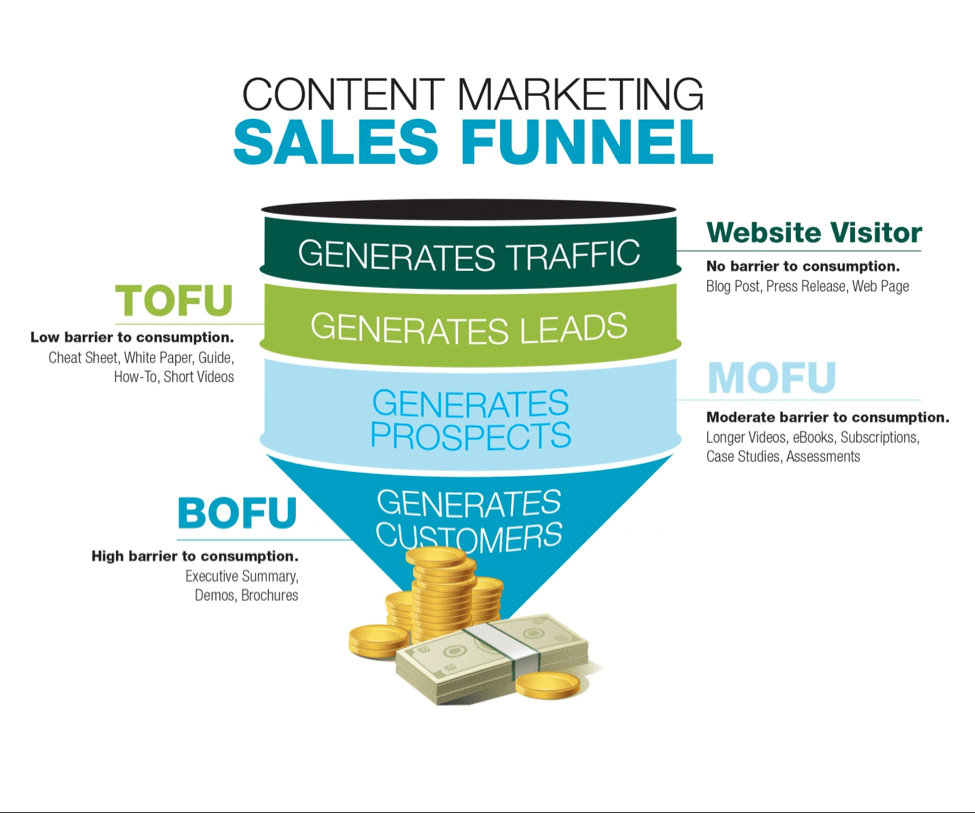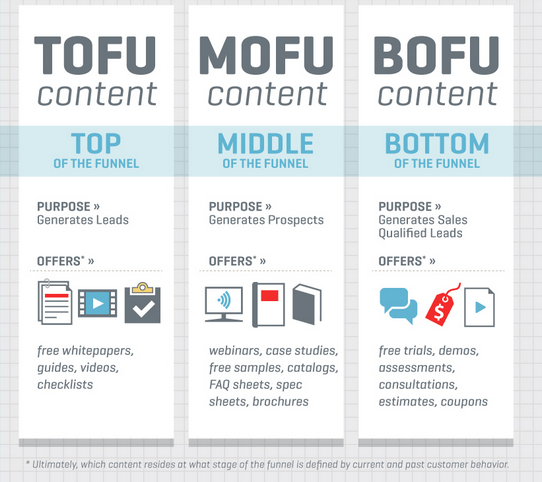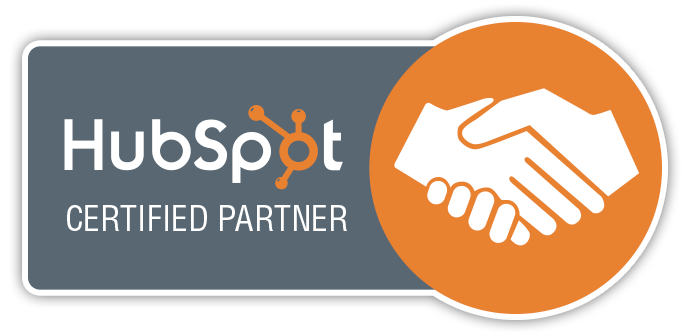To answer the title of this blog post let’s first start by reviewing the difference between a Digital Marketing Company and a Marketing Company. How much can really be different in today’s digital driven economy? A lot. Many traditional marketing companies claim to offer a full suite of digital services, when, in fact, they do not.
This isn’t a big secret. Traditional marketing companies’ pitches can seem like smoke and mirrors, hiding the fact that they are not capable of providing true digital marketing services such as search engine optimization (SEO), social marketing, and robust user experience design, website redesign and development– and let’s not forget the ever more critical content and UX strategy now necessary for any brand to truly succeed online.

Marketing Companies often maximize their technical capabilities with a help desk junior associate, while digital marketing companies have a chief technology officer and talent that surrounds him to offer top notch digital services to its clients. Marketing companies often feel because their latest version of Photoshop enables them to make a website design comp they are of course now a top website design agency. Not really true as web design in today’s responsive design world requires services such as journey mapping, taxonomy development, and persona research that informs a sophisticated website presentation to its users that really delivers.
While both top digital marketing companies and top marketing companies offer a sophisticated integrated way to drive targeted traffic to its users, the reality is that the digital firm will offer up ideas that use the latest and greatest digital trends because they have talent focused on emerging platforms and how to integrate them together. From virtual reality to data visualizations, this kind of lingo is second nature at a digital marketing company, but at a traditional top marketing company the answer is either the firm is feeling awkward and not confident offering this solution, or the talent helping is a 3rd party consultant that isn’t truly integrated into the agency’s DNA.
So now that I have helped clarify the difference between a Top Digital Marketing Company and a Top Marketing Company, let’s look at that other word – Company vs Agency.
An agency’s job is to plan a campaign using digital and traditional methods such as PR, broadcast media, online advertising, or direct marketing. They utilize the talents of their art directors, graphic designers, and copywriters. They create campaigns that shine the spotlight on your product or service for a finite length of time.
If you have a global strategy, a well-defined brand, a keen idea of exactly who your customer is, and a designated advertising & creative budget, then you might want to utilize the services of a top agency.
Be doubly sure that you know the characteristics, the lifestyle, and current buying preferences of your customers. You don’t want to waste time and money marketing to the wrong person. Knowing your target audience and your ideal buyer is the job of marketing. Also, knowing how to attract customers versus playing tag with them is the job of marketing.
So in summary – agencies focus on campaigns to solve a client’s very specific pain point. Usually defined by the client. Agencies are usually laser focused, agile, and deliver with passion.

Mosaic illustration for the advertising campaign of Clear Channel in Switzerland
Ok, so then what’s is different about a company vs an “agency.”
You may need help in honestly assessing the needs of your business. If that is the case, here are some good questions to start out with:
1) Are you attracting enough leads?
2) Are you able to accurately track results of your advertising and marketing strategy?
3) Are you converting leads to sales?
4) Are you nurturing and maintaining relationships with your customer base?
These are the types of issues that a company can help you with. The agency prides itself, rightfully so, on taking a high level approach with a laser focus on execution. However, the top marketing company takes a more consultative approach. The result is a marketing strategy that is consistent with your company history, values, and short and long term goals. Finally, the biggest result is getting results that match your expectations.

If you haven’t yet heard, adult coloring books are in. No, not coloring books with naughty drawings—these are designed for adults, using colored pencils and markers, with intricate designs and geometric patterns. We started hearing about them last year, and they soon became the sleeper hit of the Christmas season, especially among millennials and college students.
The media stumbled upon their popularity after the holiday season. CNN.com discovered that:
Coloring books are no longer just for the kids. In fact, adult coloring books are all the rage right now. And while researchers and art therapists alike have touted the calming benefits for over a decade, it’s childhood favorite Crayola that’s gotten adult coloring books some serious grown-up attention.
CNN reported that the iconic crayon maker—the one that everyone knows from their own childhood—had launched a set of markers, colored pencils and a collection of adult coloring books, called Coloring Escapes, to take advantage of this new-found market.
Cute story, but what does it have to do with smart marketing?
At Bluetext, we thought it might be fun to create a page from an adult coloring book and push it out through digital channels to our clients, colleagues, prospects, friends and others in the marketing world. We thought it might strike a chord of both nostalgia for our crayon years and curiosity on this new trend. We also thought it would differentiate us from other creative agencies, who may not always be looking for new ways their clients can differentiate themselves in their markets. You can see it for yourself here.
And we were right! The response has been amazing. We’ve had far more downloads than we ever imagined. It’s just another way for us to keep top of mind with our clients and prospects, one that does it in a fun and little bit different way. That’s smart digital marketing.
This is the creativity we bring to Bluetext. Imagine what we can do for your brand.

Today’s landscape requires the need for constant database care and feeding…smart marketing campaigns, hyper targeted, very personalized, with highly engaging and rich creative presentation. Spray and pray marketing tactics have not worked for quite some time, and just trying to mimic the new hot buzz wordy marketing approach doesn’t also pay off as well as a thoughtful, disciplined and collaborative developed marketing strategy between a client and its marketing agency. So where does the” certified” and the “vegetarian” come in?
Vegetarian Marketers love TOFU. That’s their meat!

What’s TOFU?
Top of Funnel focused marketing activities.
Or better defined.
Good top of the funnel content marketing serves to commence a relationship (by way of opt-in) with a prospect visiting your site who otherwise might leave without making contact
Here are the key questions you should ask when putting together top of the funnel content.
- Does this intersect my prospects’ information journey at the right point?
- Does this look to take control of the information journey thereafter?
- Is this too obviously marketing?
- Have I considered what else I’ll back up this content with?
Why TOFU (Top of Funnel)?
There is no middle of the funnel or bottom of the funnel without the top of the sales funnel. The challenges brands experience in the middle of the funnel usually fall into one of two areas. The first area is non-opportunities. These are the “deals” that aren’t qualified opportunities at all. The second group is stalled opportunities. These opportunities are usually missing some of the commitments necessary to move them forward internally. The end of the funnel problems are usually around capturing value. But top of the funnel problems are far trickier. Think about how a funnel works. If you feed it in dribs and drabs you get dribs and drabs out of the other end. But if you keep a nice steady stream pouring into the funnel, you get a nice steady stream out of the skinny end.
Make a long story short. Worry first—and most—about the top of the sales funnel.

Now for the “certified” part of the equation
Bluetext works with many marketing automation and CRM systems, including Eloqua, Hubpost, Marketo, Pardot, and Salesforce – integrating, configuring, pushing creative through them, optimizing with them. These tools are the personalization marketing brain and the central data hub of value that all of our blood, sweat and tears deliver for our clients every day.
Bluetext is proud to announce we have expanded our credentials by being named a certified Hubspot agency.

Why work with an agency that has certified credentials versus a lot of lip service?
There are a lot of agencies that offer marketing automation services, but not all of them have the appropriate certifications. For organizations looking to partner with an agency to help them with their marketing automation readiness and implementation it is important to verify that an agency has the expertise to do so. A HubSpot Certified Agency Partner provides validation of the depth of an agency’s inbound expertise.
Bluetext delivers innovative content marketing campaigns for many consumer brands like Google, WeatherBug and SoundExchange. Contact Bluetext to learn how we can build your sales funnel with innovative digital content marketing services.
With competitive global markets, what makes your brand different from your competitors?
Sometimes, it takes market research to identify what makes you unique and what’s really important to your target customers. Fill out the form to download Bluetext’s Market Research Primer so you can understand how to:
- Leverage research to craft a market message
- Develop a positioning strategy
- Stand out from the crowd
Download the Market Research Primer to get ahead of the competition here!
Sometimes it seems as if marketers are speaking their own language when you try to engage them in a Virtual Reality project to support your marketing, branding, or communications goals. From HMD to FOV to Judder, Virtual Reality jargon can be confusing. Whether a Google Cardboard project for your campaign or a high-end Oculus Rift project for a special event, it requires a solid collection of new terminology specific to VR technology. To help demystify some of the most commonly used Virtual Reality terminology so you can have a savvy discussion with your in-house engineers, agency folks or freelance consultants, we’ve put together this VR glossary.
What’s a year-end blog without trends for the next? At Bluetext, we want to make sure our clients are armed with the latest digital marketing best practices so they can continue to compete at the highest level in an increasingly digital environment – here are a handful to keep top of mind as you map out your strategy for 2016:
- Content is King
Developing a steady cadence of quality content that maps to your customers’ buyer journey remains priority tactic number one to build brand awareness, perception, engagement, trust and ultimately conversion. Aside from being the tool du jour for establishing and maintaining market leadership – content marketing is an equally powerful driver of SEO – and a significantly less expensive demand generation mechanism than traditional paid and/or earned outbound marketing that, if done right; will provide you with greater ROI and overall marketing effectiveness. And Instead of disrupting a user’s daily activity to convince them to buy a product or service when 70% of their buying decision has already been made, you’re establishing digital brand authority well in advance of their need to do so.
- Visual Storytelling
Google’s most recent algorithms have placed a premium on visual content over keyword optimization. Search engines use SERP (search engine results page) rankings to measure how valuable your website content is to your users. By prioritizing images, infographics, video and other visual content over plain, less engaging keyword dense text, you are more likely to deliver the quality and relevancy of content to your customers who will then be inclined to spend more time on your website versus your competitors’ to complete their search
- Mobile First
This is the year mobile domination – within the next twelve months mobile will surpass desktop browsing and never look back. That – combined with Google’s latest algorithm putting much more weight on the availability and accessibility of mobile content – have rendered responsive, mobile optimized websites not just essential for growth – but vital to the long term survival of any modern business enterprise.
And this isn’t just about millennials, every demographic is becoming increasingly tethered to their mobile devices as those devices become a more integral part of their daily routines. Strong mobile functionality is so critical that a growing percentage of users won’t even do business with a company without a viable mobile digital presence.
- IOT Marketing
As my Partner Brian Lustig mentioned in his blog last week, user adoption of wearable technology is expected to reach 30% over the next twelve months, providing marketers with more data and even greater insights into our everyday lives that can and will enable them to target people based on their daily habits. As such, we should expect to see the first advertising native to wearable devices in 2016. For marketers this hyper connected world means that your data will have to become more behavior-driven, allowing you to predict your customers every move and target them in real time – and with near perfect accuracy- as users make their way through their individual buying cycles.
- Snapchat
Continuing on the real time theme, Snapchat is quickly looking to become marketers’ new shiny toy for 2016 as they move away from the one size fits all approach and attempt to leverage consumers’ voracious appetite for exclusive, unique and expirable content. And with over 20 million snaps being shared daily across the world, businesses are now taking advantage of Snapchat to promote their brands through real time social engagement marketing. In this increasingly inpatient world, communicating messages that are shorter and more direct have a better opportunity to drive conversion than their older, longwinded brethren.
At Bluetext, we understand that marketers need to adopt real time digital strategies and be more nimble than ever to get the attention of our customers. John Maynard Keynes summation of this challenge is more relevant to today’s modern enterprise than they were nearly a century ago…
“The difficulty lies not so much in developing new ideas as in escaping from old ones…“
And his insights could have no greater application today than they do with marketing.
Lets chat about your 2016 plans and how Bluetext can help you achieve your goals.
Are you feeling out of touch with the latest cybersecurity marketing jargon and worried that your boss might catch on? In the digital age, cybersecurity marketers, companies and thought leaders are constantly introducing new ideas, solutions and technologies that can be impossible to keep up with. From the top down, companies need to be familiar with critical concepts like Sandboxing, Phishing, Patching and Malware, not only so they can keep up with the evolving conversation, but so they can adapt to protect themselves and their customers from cyber threats and breaches. To ensure you’re up to speed with latest and greatest in the world of cybersecurity marketing, we’ve put together a comprehensive Cybersecurity Lingo glossary. Don’t get left out of the conversation.

Do you have the feeling you’re falling out of touch with the latest technology marketing jargon and worried that your co-workers and bosses might catch on? In today’s ever-changing digital marketing industry, professional marketers, companies and thought leaders are constantly introducing new ideas, concepts and technologies, changing the way companies approach digital marketing. Effective web design is becoming increasingly crucial and concepts such as Adaptive vs. Responsive Response, CSS, AJAX and Javascript are becoming more critical to understand. To ensure you’re up to speed with latest and greatest in the world of technology marketing, we’ve created a Technology Marketing Lingo glossary. Make sure you’re not left out of the conversation.

The team here at Bluetext will wind 2015 down with significantly more Internet of Things (IoT) domain expertise than when the year began. Several clients are playing a key role in shaping the future of this nascent technology – one that is sure to touch more consumers, businesses and government agencies in 2016.
Digital marketers are typically not “Naughty by Nature,” but given that Gartner projects a 30 percent increase in the number of connected “things” next year, it is a safe bet that we will be down with IoT. A study conducted by 2nd Watch earlier this year found nearly six in 10 U.S. IT and business executives leveraged IoT/machine data for digital marketing, though the majority (two-thirds) acknowledged these efforts were in the initial stages.
While the Internet of Things presents a massive opportunity, tapping into it won’t be easy. Marketers, already struggling to stay afloat amidst a sea of data, will find that the exploding number of IoT sensors has them drowning in it. Sure enough, data volume is no longer the problem; it’s being able to analyze data and extract meaningful insights from it that will drive successful marketing and advertising campaigns. Capturing and analyzing this data will place an even greater premium on having the right digital marketing tools to automate as much of this process as possible.
As agencies and brands gain a handle on the data volume, look for the Internet of Things to unlock several new digital marketing opportunities in 2016.
- Use IoT for marketing to user behavior patterns – Smart home technologies such as connected thermostats and smart fridges offer marketers an opportunity to reach consumers at the right time and with the right message. Thermostats and home energy management mobile apps empower marketers to tap into a wealth of data regarding energy consumption patterns and activity patterns within the home in a way that can trigger marketing efforts around products (HVAC, filters, windows, roofing, etc.). Or consider the sensor data pushed to brands from smart fridges able to recognize the products you buy and supply levels in a way that can feed discounts and coupons at the opportune time and impact brand purchasing decisions in the process.
- Use IoT to own the buyer journey – The ability to reach target audiences more frequently and with greater personalization throughout the awareness, consideration and decision stages of the buyer’s journey positions IoT to augment traditional touch points such as offline and online advertising, social media, mobile, email, etc. For B2C, smart TVs offer brands a captive audience that can be marketed to before they conduct a product search via Google or in person at the store. For B2B, the ability for technology vendors to understand when printers need to be replaced or cartridges refilled, when warehouse suppliers are running or when businesses are not using energy efficiently can accelerate the buyer journey.
- Use IoT to pull and push data – At this point in its evolutionary cycle, the great value of IoT is that digital marketers can access real-time information on how business users and consumers use products, when they use them, and what motivates them to do so. 2016 will see the early stages of the digital marketer use case shift from pulling all this data to then using analytics to push information back.
- Track where wearables are headed – Try saying that five times really fast. Wearables may be among the most hyped aspects of the Internet of Things, and the market trajectory remains uncertain. The Apple Watch sparked a great deal of imagination pre-launch, and as 2015 comes to a close the technology giant – and its customers – are still feeling their way on how these devices can best be used. Internet connected wearables are poised to extend far beyond just watches; from clothing and shoes to augmented reality devices there exists an opportunity for brands and agencies to reach audiences beyond smartphones and tablets.
- Cars may be ground zero for IoT – Americans drive more than 29 miles per day, making two trips at an average duration of 46 minutes. Those really depressing figures come courtesy of a 2015 study by the AAA Foundation for Traffic Safety and the Urban Institute. For commuters, these numbers are tough to swallow; but for digital marketers identifying the best places to reach target audiences, they are numbers that cannot be ignored. Vehicles are more connected than ever through software systems, and as the vehicle becomes just another data collecting sensor on the move, advertisers and marketers gain valuable insights into when and where people go. The in-vehicle ads become more targeted and valuable, and brands can literally change the course of vehicle destinations based on consumer data.
To learn more about the possibilities IoT offers, contact Bluetext today:
Innovations in real estate marketing can help drive a company’s ability to hit their desired Key Performance Indicators. Through Bluetext’s experience working with top real estate brands like JLL and Kettler we understand what drives integrated marketing and digital marketing results.
SPEED
Faster websites make more money for their companies. Fast includes how long it takes your real estate website to load, but also how long it takes the real estate website search engine to show the user the type of available product that matches their search. Some sites use real time API calls and tons of third-party data services that bog down a search performance. This performance hit hurts seo, conversion, and engagement metrics. The bottom line is performance matters. The relationship between performance and revenue has been shown over and over again. Here are just a few examples:
- Amazon loses 1% of sales for every 100ms it takes their site to load.
- Shopzilla reduced their loading time from 7 seconds to 2. This performance boost resulted in a 25% increase in pageviews and a 9.5% increase in revenue.
- Mozilla shaved 2.2 seconds off their landing pages and increased download conversions by 15.4%, generating millions of additional Firefox downloads every year.
Ways to speed up your website include:
- Enable CMS compression
- Optimize your images
- Move JavaScript files to the footer
- Merge CSS files – Inline small CSS files
- Use a Content Delivery Network
- Minimize the number of HTTP requests
- Fix your 404 errors
- Take care of your page size
- Reduce the number of API calls
LOCATION AWARE USER EXPERIENCES
The other innovation real estate marketing executive need to consider is launching location aware marketing platforms and tools. Along with the adoption of HTML5, the Geo-location API has become very powerful technology. This allows your site to receive geographic positioning information using JavaScript. Once you have a location aware site or app, you are able to provide more accurate and appropriate content for your visitors. This is called geo-marketing. Geo-marketing is a relatively new concept defined as:
- The integration of geographical intelligence into various aspects of marketing, including websites and sales and distribution.
Although a new term, the principle of geo marketing has been around for a while. Facebook has been utilizing this approach for some time. Facebook gathers location-based data (based on users’ IP addresses) then show advertisers appropriate content for that geographic region. Google and other search engines also use this functionality and include location based search results for their users.
Your real estate website should offer the ability to search where you are located to offer up products around you. Of course many people search for information in another region for relocation scenarios, but the majority are in market moves and these use cases need to be addressed with a fast geo-personalized user experience.
We’d love to talk to you about your real estate marketing need. Let’s chat:


